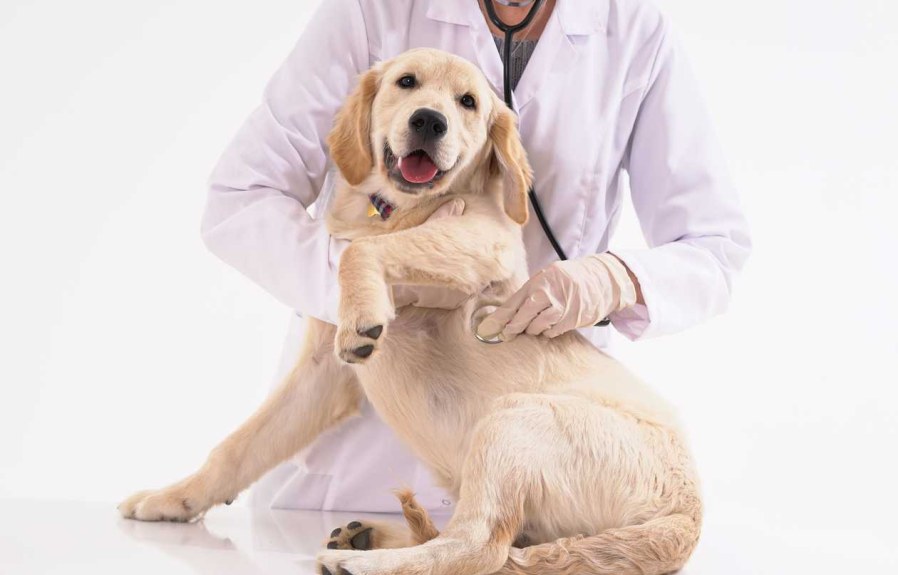Pet insurance is a type of insurance that covers the cost of veterinary care for pets. Pet insurance provides financial protection in case of unexpected medical expenses for dogs, cats, or other domestic animals, ensuring that pet owners can provide necessary healthcare without worrying about the costs.
Pets are beloved members of the family, and just like humans, they can get sick or injured. Pet insurance helps pet owners afford the best possible medical care for their furry friends, giving them peace of mind and ensuring that their pets receive the treatment they need.
Whether it’s a routine check-up, vaccinations, or emergency surgery, pet insurance can help alleviate the financial burden and ensure the well-being of our beloved companions.
The Basics Of Pet Insurance
Pet insurance is a type of coverage that helps protect pet owners against unexpected veterinary costs. Under this insurance policy, pet owners pay a monthly premium to have certain medical expenses for their pets covered.
How Does Pet Insurance Work?
Pet insurance operates similarly to human health insurance. When the pet requires medical attention, the owner pays the vet bill upfront and then submits a claim to the insurance provider for reimbursement based on the policy terms.
Types Of Pets Covered
All domestic pets such as cats and dogs are typically covered by pet insurance. Some insurers may also offer coverage for exotic pets like birds, reptiles, and small mammals.

Credit: http://www.polltopastern.com
Key Coverage Options
When it comes to pet insurance, there are two main coverage options to consider: accident-only policies and accident and illness policies. These options provide different levels of coverage depending on your pet’s needs, so it’s important to understand the differences before making a decision.
Accident-only Policies
Accident-only policies are designed to cover unexpected incidents or injuries that may occur to your furry friend. This type of policy typically covers sudden accidents like broken bones, cuts, or injuries resulting from accidents such as bites or falls. It provides financial protection in case your pet needs emergency veterinary care after an unforeseen event.
With accident-only coverage, you can have peace of mind knowing that you won’t be burdened with hefty veterinary bills resulting from accidental injuries. It ensures that your pet receives timely medical attention, regardless of the cost.
While accident-only policies don’t cover illnesses or pre-existing conditions, they are more affordable compared to accident and illness policies. This makes them an attractive option for pet owners who primarily want protection against unexpected accidents.
Accident And Illness Policies
Accident and illness policies are a more comprehensive form of pet insurance coverage. In addition to covering accidental injuries, this type of policy also extends coverage to various illnesses that your pet may develop over time. This can include common ailments like infections, allergies, cancer, hereditary conditions, and more.
Having an accident and illness policy gives you the assurance that your pet’s medical needs are covered, regardless of the cause. Whether your pet falls ill or gets injured, you can rest easy knowing that their medical expenses are taken care of.
It’s worth noting that accident and illness policies usually do not cover pre-existing conditions. These are any conditions that your pet had prior to purchasing the insurance policy. It’s essential to carefully review the terms and conditions of the policy to understand what is and isn’t covered.
When choosing between these two coverage options, consider your pet’s age, breed, and any existing medical conditions. The right choice depends on your budget, risk tolerance, and the level of coverage you desire for your furry companion.
Factors To Consider Before Purchasing
Before purchasing pet insurance, there are several important factors to consider to ensure you’re making the best decision for your furry friend. Understanding the cost of premiums, deductibles, and copayments will help you choose the right pet insurance plan that suits your budget and provides comprehensive coverage for your pet’s health needs.
Cost Of Premiums
When considering pet insurance, the cost of premiums is a crucial factor to evaluate. Comparison shop to find a policy that fits your budget while providing adequate coverage. Consider the monthly or annual premiums in relation to the coverage provided, including chronic conditions, prescription medications, and preventive care. Additionally, check for any discounts or special offers from insurance providers.
Deductibles And Copayments
Understanding deductibles and copayments is essential when selecting a pet insurance plan. Look for a balance between the deductible amount and monthly premiums. Lower deductibles may result in higher premiums, while higher deductibles can lower monthly costs but may require more out-of-pocket expenses when filing a claim. Consider your financial situation and your pet’s potential healthcare needs to find the right balance.
What Pet Insurance Typically Does Not Cover
Pre-existing Conditions
Pet insurance typically does not cover pre-existing conditions, which refers to any illness or injury that your pet showed signs of or was diagnosed with before the policy’s start date. This means that if your pet has a pre-existing condition, any related treatments, medications, or surgeries for that condition will not be covered by the insurance plan. It’s important to thoroughly review the policy’s terms and conditions to understand how pre-existing conditions are defined and handled.
Wellness And Routine Care
Another aspect that pet insurance typically does not cover is wellness and routine care, such as vaccinations, flea control, heartworm prevention, annual exams, and dental cleanings. These services are considered to be part of responsible pet ownership, and as such, are generally not included in standard pet insurance plans. Pet owners may have the option to add wellness or routine care coverage to their policy as an additional benefit, but it’s not typically included in basic coverage.
Choosing The Right Pet Insurance Plan
Choosing the right pet insurance plan is essential to ensure that your furry friend gets the best care when needed. However, with so many providers and coverage options available, it can be overwhelming to make the right choice. This section will guide you in making an informed decision by exploring two key aspects of choosing the right pet insurance plan: researching different providers and customizing coverage to fit your pet’s needs.
Researching Different Providers
Researching different providers is the first step in finding the perfect pet insurance plan for your beloved pet. With a plethora of options out there, it’s crucial to evaluate each provider’s reputation, coverage limitations, claim process and customer reviews. Here are some factors to consider:
- Read reviews and ratings to gauge customer satisfaction.
- Compare pricing structures and deductible options.
- Understand the waiting periods for new illnesses or injuries.
- Ensure the provider covers pre-existing conditions, if applicable.
It’s important to perform this research diligently. Take your time, weigh the pros and cons, and choose a provider that aligns with your pet’s specific needs and your budget.
Customizing Coverage To Fit Your Pet’s Needs
The next step in choosing the right pet insurance plan is customizing the coverage to fit your pet’s needs. Every pet is unique, and their insurance needs may vary based on factors such as age, breed, and pre-existing conditions. To ensure your pet is adequately protected, consider the following:
- Assess your pet’s breed-specific health risks and prioritize coverage accordingly.
- Consider the age of your pet and select coverage that accommodates their age-related health issues.
- Factor in your pet’s lifestyle and activities to determine if additional coverage, such as accident or travel insurance, is necessary.
- Evaluate the reimbursement options (e.g., actual vet bill or a predetermined benefit schedule) and choose the one that suits your financial preferences.
By customizing your pet’s insurance coverage to their specific needs, you can ensure that they receive the necessary care without any financial burden on you.
Making A Claim
When your pet is in need of medical attention, making a claim on your pet insurance policy can help cover the costs. Submitting Documentation and understanding the Reimbursement Process are essential steps in this process.
Submitting Documentation
Gather all relevant information including vet records, invoices, and any other required documents.
- Fill out the claim form completely and accurately.
- Include the itemized vet bill detailing the services provided.
Reimbursement Process
- Submit your claim online, by email, or through the insurance provider’s mobile app.
- Wait for the claim to be processed, which can take a few days to a few weeks.
- Once approved, you will receive reimbursement for the covered expenses.
Tips For Getting The Most Out Of Your Pet Insurance
Pet insurance can provide peace of mind knowing your furry friend is covered in case of unexpected medical expenses. To maximize the benefits of your pet insurance policy, consider the following tips:
Regular Vet Check-ups
- Schedule routine vet visits to ensure your pet’s health and catch any issues early.
- Regular check-ups help in maintaining your pet’s well-being and preventive care.
- Early detection during check-ups can lead to timely treatment, saving costs later on.
Understanding Policy Renewal
- Review your policy renewal terms and coverage details periodically.
- Understanding renewal requirements helps in avoiding lapses in coverage.
- Stay informed about any changes in policy terms or coverage to make informed decisions.
Final Thoughts On Pet Insurance
Peace Of Mind For Pet Owners
Pet insurance provides a sense of security and peace of mind for pet owners. Knowing that unexpected veterinary expenses are covered can alleviate the financial burden.
The Importance Of Being Prepared For The Unexpected
Being prepared for the unexpected is crucial when it comes to the well-being of our beloved pets. Pet insurance ensures that you can provide the best care without financial stress in unforeseen situations.
Frequently Asked Questions For What Type Of Insurance Is Pet Insurance
What Does Pet Insurance Cover?
Pet insurance can cover veterinary expenses, including accidents, illnesses, and preventive care such as vaccinations and wellness exams. It can also provide coverage for prescribed medications and even surgeries, depending on the plan.
Is Pet Insurance Worth It For Older Pets?
Yes, pet insurance can still be beneficial for older pets. While some providers may have age restrictions, others offer coverage for senior pets. It’s important to carefully review the policy to ensure it covers the specific needs of older pets.
Does Pet Insurance Cover Pre-existing Conditions?
Most pet insurance plans do not cover pre-existing conditions. It’s essential to enroll your pet in insurance while they’re young and healthy to avoid exclusions for pre-existing conditions in the future.
Can I Choose My Veterinarian With Pet Insurance?
Many pet insurance plans allow you to choose your veterinarian. However, it’s essential to review the policy to ensure that your preferred veterinarian is within the insurance network to maximize coverage and benefits.
Conclusion
To sum up, pet insurance offers valuable protection for your furry friend’s health and well-being. It provides financial support for unexpected veterinary expenses, ensuring that you can give your pet the best care possible without worrying about the cost. Whether it is for accidents, illnesses, or routine check-ups, pet insurance offers peace of mind and enables you to make informed decisions about your pet’s healthcare.
Don’t wait until it’s too late – consider getting pet insurance today and give your beloved companion the protection they deserve.
{ “@context”: “https://schema.org”, “@type”: “FAQPage”, “mainEntity”: [ { “@type”: “Question”, “name”: “What does pet insurance cover?”, “acceptedAnswer”: { “@type”: “Answer”, “text”: “Pet insurance can cover veterinary expenses, including accidents, illnesses, and preventive care such as vaccinations and wellness exams. It can also provide coverage for prescribed medications and even surgeries, depending on the plan.” } } , { “@type”: “Question”, “name”: “Is pet insurance worth it for older pets?”, “acceptedAnswer”: { “@type”: “Answer”, “text”: “Yes, pet insurance can still be beneficial for older pets. While some providers may have age restrictions, others offer coverage for senior pets. It’s important to carefully review the policy to ensure it covers the specific needs of older pets.” } } , { “@type”: “Question”, “name”: “Does pet insurance cover pre-existing conditions?”, “acceptedAnswer”: { “@type”: “Answer”, “text”: “Most pet insurance plans do not cover pre-existing conditions. It’s essential to enroll your pet in insurance while they’re young and healthy to avoid exclusions for pre-existing conditions in the future.” } } , { “@type”: “Question”, “name”: “Can I choose my veterinarian with pet insurance?”, “acceptedAnswer”: { “@type”: “Answer”, “text”: “Many pet insurance plans allow you to choose your veterinarian. However, it’s essential to review the policy to ensure that your preferred veterinarian is within the insurance network to maximize coverage and benefits.” } } ] }


Leave a comment